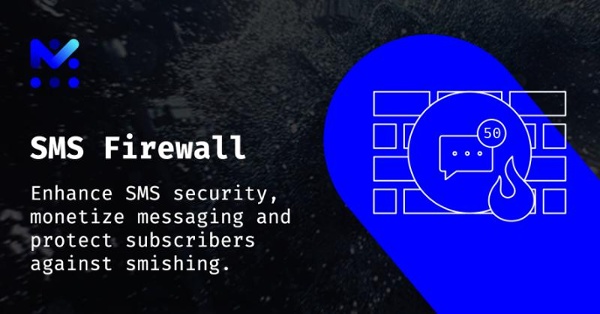Today, over 5 billion people globally send and receive text messages. That’s an astonishing 65% of the world’s population. While traditional SMS is for person-to-person communication, A2P SMS is designed for machine-to-person communication. It allows industries such as tourism, healthcare, and banking systems to send automated notifications, alerts, and reminders to their customers. Automated flight updates are a typical example of A2P SMS, but now these have been replaced with COVID-19 contact tracing alerts. People who had contact with someone infected with COVID-19 may first get an A2P text message from their local health department. SMS and A2P have become a critical way for businesses to engage with customers, and it is expected to grow at a rate of 26 percent over the next five years.
While robocalls and consumer fraud have been plaguing voice services for years, SMS and A2P SMS have generally been considered a well-established, safe, efficient, and cost-effective communication. In fact, around 98% of all text messages are immediately opened by the receiver. Sadly, these communication channels are starting to show some cracks. Their rise has also led to a rise in three types of SMS fraud, which if left unchecked, risk harming this critical communications channel:
Smishing is a type of cyber-security attack that utilizes SMS to steal personal credentials of mobile users. Smishing is a term that combines "SMS" (short message services) and "phishing," which is when fraudsters send emails that contain malware. These fraudsters, or in this case, ‘smishers’, simply use text messages instead of email. This type of fraud is particularly dangerous because people tend to trust text messages more than emails and will often click on harmful links or respond to fraudulent requests.
Gray-Routing happens when A2P traffic is intentionally mixed with valid person-to-person (P2P) traffic with the intent of avoiding payment for A2P charges. This is a way for fraudsters to send A2P SMS but disguise them as standard SMS, which typically don’t incur a charge, and it cuts into service providers’ revenue streams.
SMS SPAM is also on the rise – along with customer complaints due to these unsolicited messages. While not always fraudulent – just like robocalls, they can become annoying and can lead to subscribers missing or ignoring legitimate texts.
Fortunately, recent advancements in SMS firewalls can prevent fraudsters from smishing, spamming, and grey- routing SMS traffic.
Here are three good reasons to act now, before it’s too late:
- Protect the trust you’ve built: The presence of fraudsters and hackers can harm the very trust you have worked so hard to build with your enterprise and retail customers. If this trust gets eroded, consumers will simply stop answering their text messages for fear of being infected with malware - or worse.
- Protect your revenue streams: The growth of lucrative A2P SMS has just begun, and with millions of IoT and 5G connected ‘things’ coming online, your busines customers will depend on it more than ever. According to Juniper Research, operator revenues from global A2P messaging traffic are expected to grow from $39.6 billion to $50 billion from 2020 to 2025.
- Protect your customers: Smishing can result in serious financial losses for your subscribers. It often is used to get individuals to reveal personal information, such as passwords or credit card numbers. And they are often successful because the messages appear to come from legitimate sources, such as banks and well-known retail brands.
SMS Firewalls to the Rescue
SMS Firewalls address these threats and security breaches and can help to boost enterprise messaging revenue. Research from Juniper highlights machine learning’s critical role in identifying and mitigating fraudulent SMS traffic in real-time. By implementing SMS Firewalls, Juniper expects drastic reductions in revenue losses from illegitimate use of these channels, from $5.8 billion in 2020 to $1.2 billion by 2025.
Mobileum’s SMS Firewall, which was recently recognized as a market leader by Juniper Research, automatically identifies known and unknown messaging security attacks. Using machine learning technologies, Mobileum’s SMS Firewall reduces revenue leakage by controlling traffic from grey routes. It also detects SMS spamming and smishing by securely evaluating multiple parameters, including message content, to protect customers from malicious attacks.
Mobileum’s SMS Firewall automatically detects and blocks fraudulent mobile-terminated SMS. It analyzes messages based on various criteria, including the use of malicious keywords. It also leverages the latest in machine-learning, analytics, and natural language processing (NLP) techniques to detect the presence of fraudulent or suspicious URLs, telephone numbers, emails, and other keywords within the messages. This automated process has the added advantage of ensuring complete data privacy with zero human intervention, while also providing an increased level of detection accuracy. Mobileum’s SMS Firewall prevents security threats by blocking unsolicited messages from untrusted sources - while distinguishing and allowing legitimate messages.
Mobileum also offers SMS Bypass fraud detection and SMS testing, which enables CSPs to perform smart profiling and active testing to detect the presence of potential SMS Bypass fraud in their network. Operators can run real-time SMS tests across different international networks, platforms, and aggregators to expose suspicious and fraudulent messages, or open an SMS Center (SMSC) that will terminate illegal or unregulated traffic. Furthermore, operators can enhance their fraud coverage and accuracy with Mobileum’s advanced analytics Fraud Management System and increase their SMS revenue by preventing content providers from bypassing SMS termination fees.
Want to learn more? Contact Us, and we will put you in touch with one of our Security or Risk Management experts.

.png?width=60&name=Square%20340x340%20(1).png)


Let Us Know What You Thought about this Post.
Put your Comment Below.